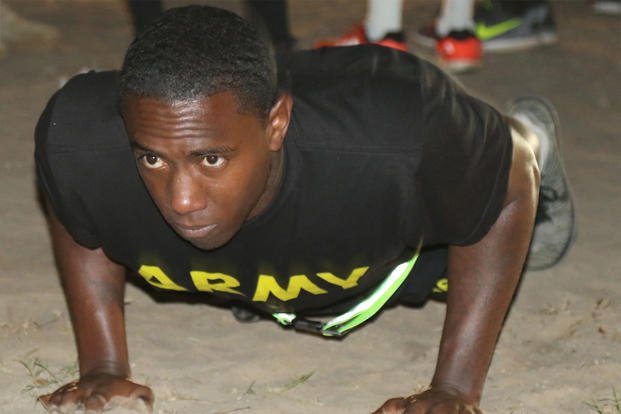You should create an assessment week for your training program at some point. A logical time for that assessment during a 12- or 16-week cycle would either be at the beginning, the end or both. About midway through the cycle, check your progress to see whether you are moving in the right direction.
These assessments have to be honest if you want accurate measures of your ability, but the test should also cover the basics of training.
- How do you feel? Are you burned out? (see recovery help)
- Are you consistent with your training? Missing any days during the week?
- How are you eating at each meal and sleeping each night?
These somewhat subjective marks of assessment are just as important as objective grades during your assessment day or week. You can decide how many events to assess, but for anyone who wants to become a better tactical athlete, maintaining your current strengths and improving your current weaknesses will require more than a few days of testing.
Here is something we do about six weeks into our winter lift cycle right around Groundhog Day. Our goal is to improve strength, power, and speed and agility, but maintain our PT test scores for cardio and muscle stamina.
Tactical Groundhog Test Week
Day 1
Take your required military, police or firefighter fitness test, one that you're currently doing every six months or will have to do in your future career. Many of our students are preparing for various Navy jobs (SEAL, SWCC, diver or rescue swimmer), so we do the following Physical Screening Test (PST) on the first day of the week.
PST/Physical Ability and Stamina Test (PAST)
- 500-yard or 500-meter swim
- Pull-ups
- Push-ups
- Sit-ups
- 1.5-mile run
Depending on your scores on this test, you may want to focus more on calisthenics or cardio if these are not up to the required levels.
If we discover a weakness, we follow the test with a PT Pyramid to improve calisthenics, goal pace run intervals or the 50-50 swim workout.
Day 2
We focus on leg strength and power lifts to help with overall durability in training and to prepare for tests like the Army Combat Fitness Test.
- Deadlift: 3RM
- Squats: 3RM
- Mix in some 5-10-5 agility tests, a standing long jump and a 300-yard shuttle run (12 x 25 yards)
If you are preparing for a specific Combat Fitness Test or an obstacle course, make sure you add the relevant events to your workout.
You can spread this one out into two sessions, if necessary. How is your strength and power? Can you lift 1.5 times your bodyweight (BW)? Two times your BW? Does your speed and agility feel sufficient?
Day 3
Mobility Day. Tread water with no hands for five minutes and swim 1,000 meters with fins for time. Also do the drownproofing and 100-meter swim workout to see how your pool skills are coming along.
Are you having issues with mobility after added mass? Does your comfort level in the water need work? Is a lack of mobility affecting your treading or swimming ability?
Day 4
Do an upper-body strength and endurance test, along with a ruck test.
- Bodyweight bench press for max reps (10-20)
- 20-pound pull-ups for max reps (10-20)
- 4-mile ruck with 40-50 pounds in less than 40-50 minutes
After a max effort, go for a ruck. If you have time to do more training, work on weaknesses in your upper body and push or pull muscles with a combination of weights and calisthenics
Repeat five times.
- Bench press: 5-10
- Pull-ups: max
- Rest as needed
Day 5
Depending on the distance of the longer timed run you must take (3-5 miles), assess your current pace. Are you at the six- to seven-minute mile pace? An eight-minute mile pace?.
Also, can you do a 200-meter fireman carry with someone who's your weight? Later, swim with fins 2,000 meters for time.
Day 6
Fun Workout Challenge
Do your favorite workout on this day. If you like cardio, try a Spec Ops Triathlon complete with a three-mile run, three-mile ruck and a one-mile swim with fins. If you prefer to lift and do PT, try the PT pyramid up the first half and lift on the back half of the pyramid. See workout favorite link.
If you feel you need it, consider doing another mobility day on Day 6 if you need one for recovery purposes.
This is a change of pace that many need when in the middle of a tough workout cycle. During your assessment, you will find unsuspecting successes as well as events you need to address further. That is what assessments are for. There's no need to guess whether something is working when you can easily test and find out for certain.
-- Stew Smith is a former Navy SEAL and fitness author certified as a Strength and Conditioning Specialist (CSCS) with the National Strength and Conditioning Association. Visit his Fitness eBook store if you're looking to start a workout program to create a healthy lifestyle. Send your fitness questions to stew@stewsmith.com.
Want to Learn More About Military Life?
Whether you're thinking of joining the military, looking for fitness and basic training tips, or keeping up with military life and benefits, Military.com has you covered. Subscribe to Military.com to have military news, updates and resources delivered directly to your inbox.


















